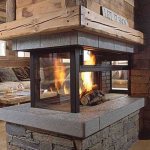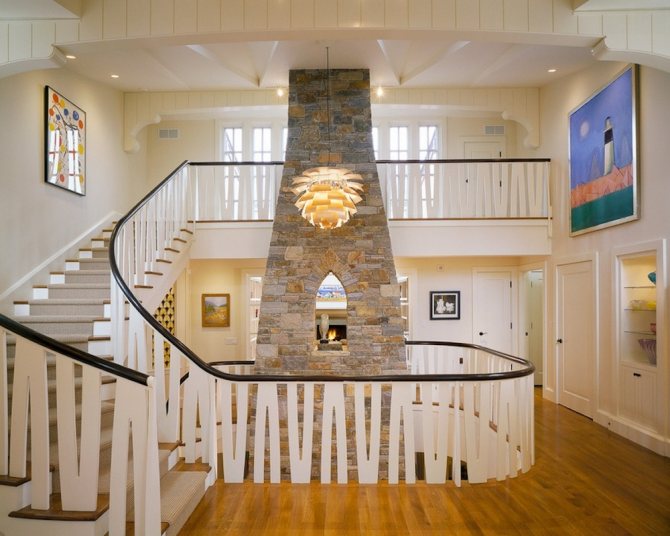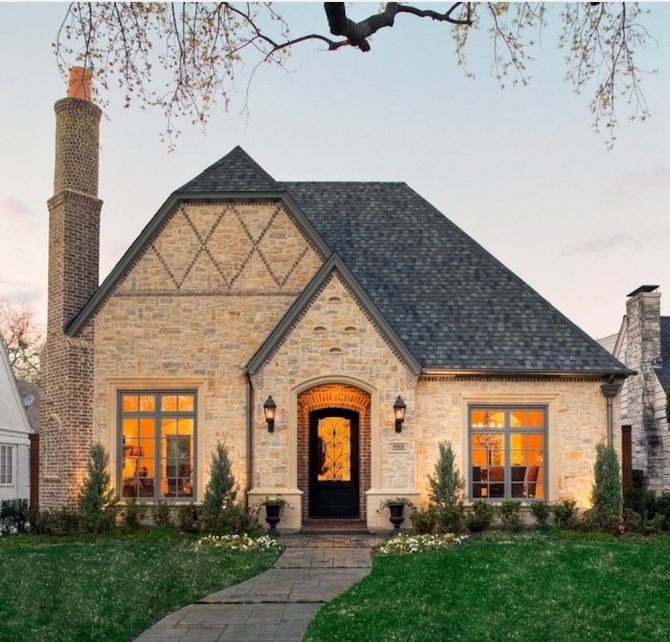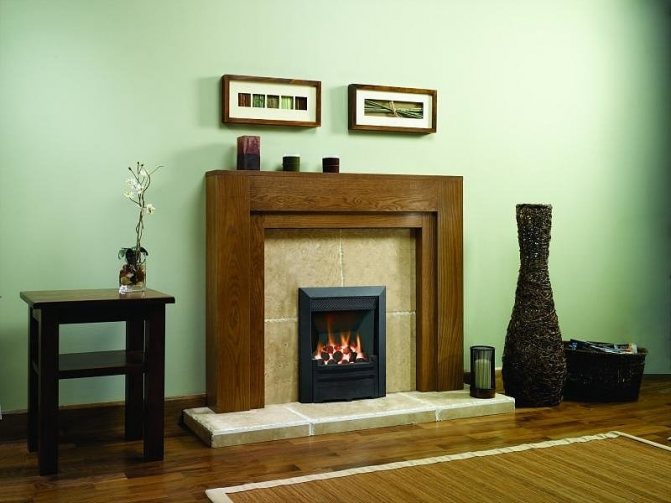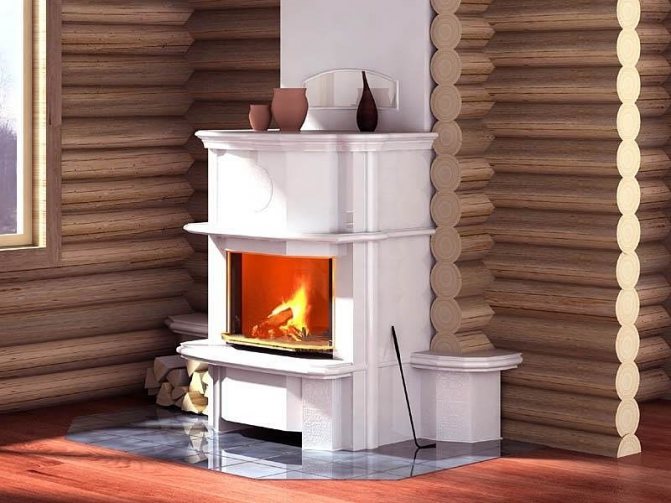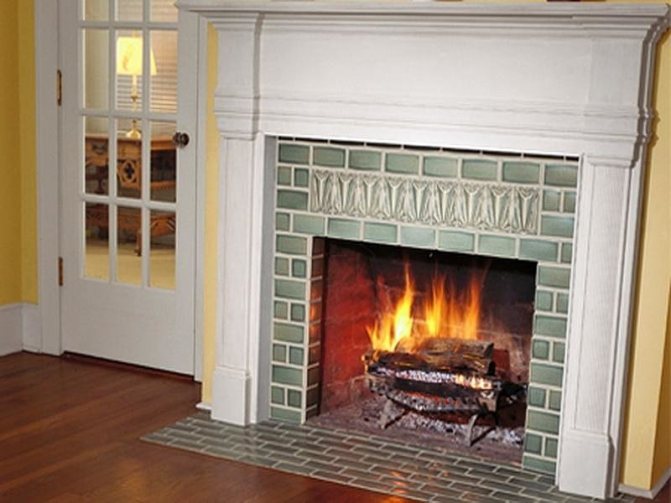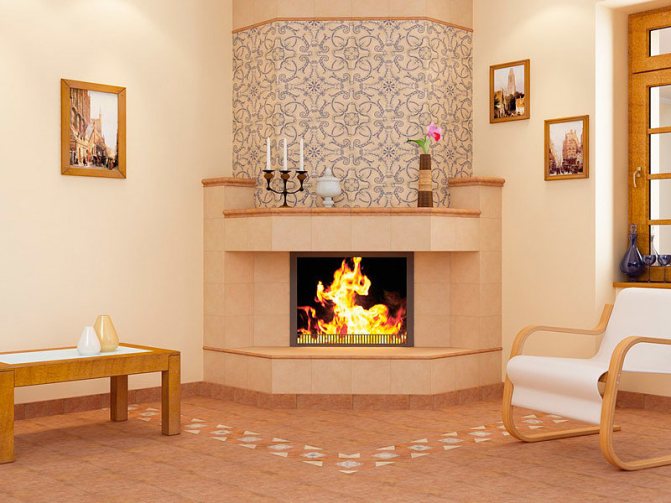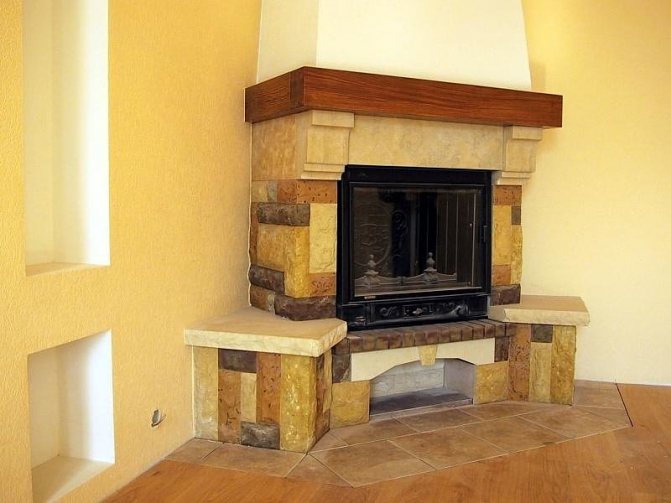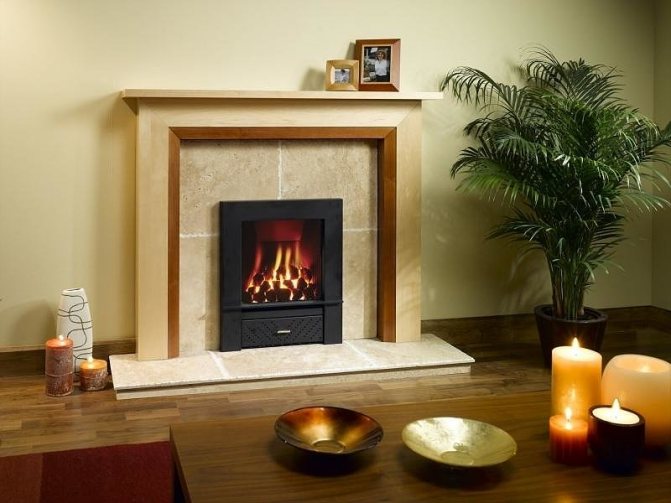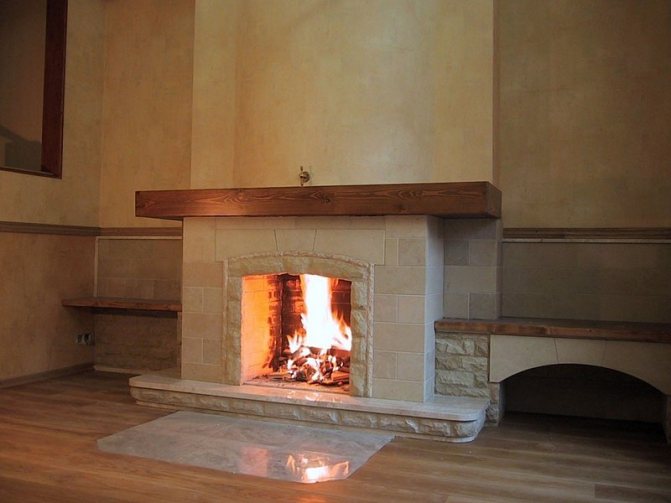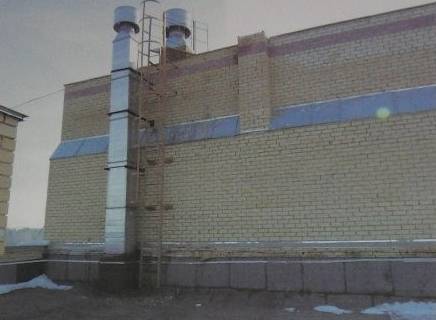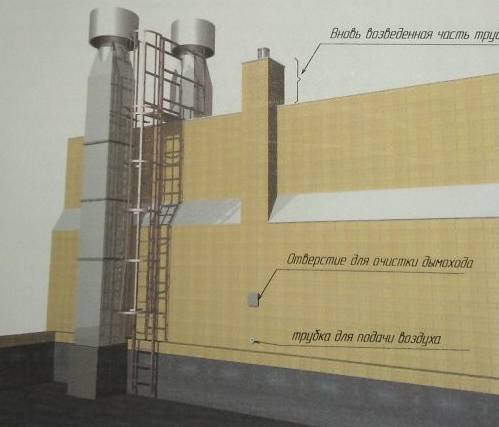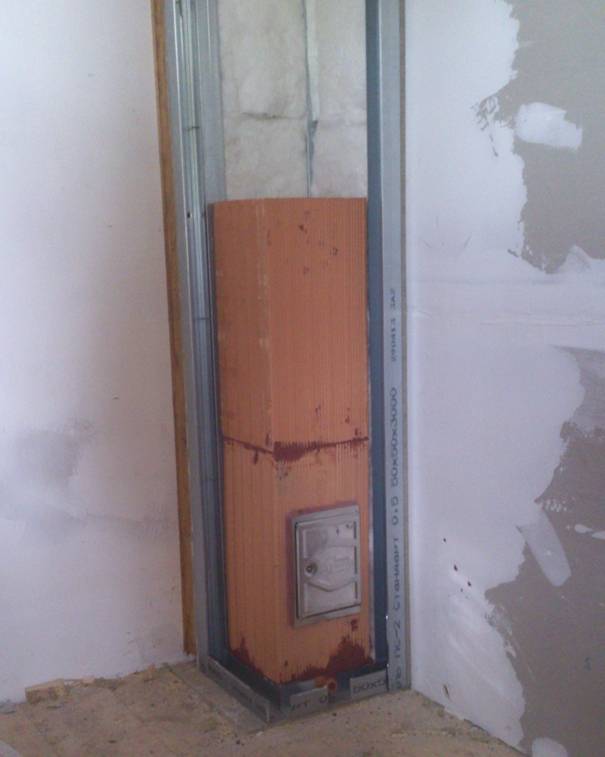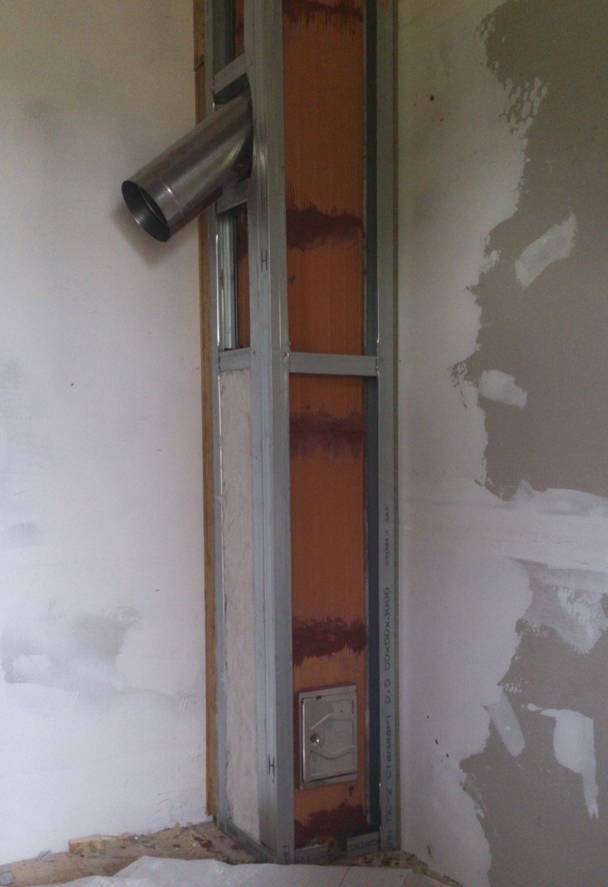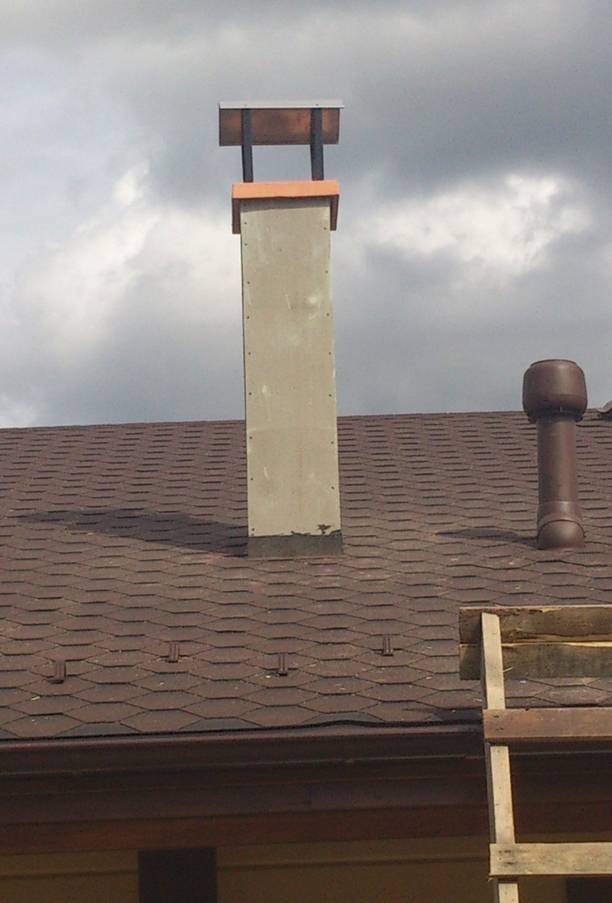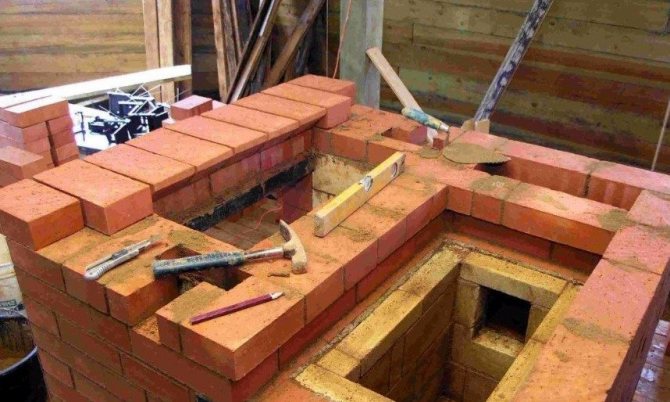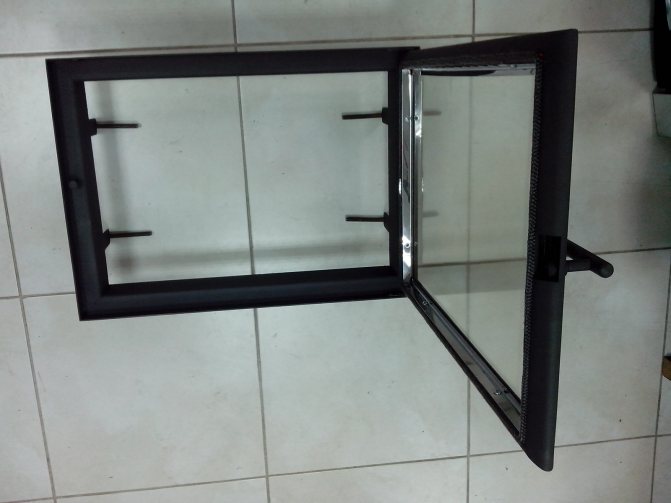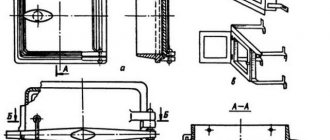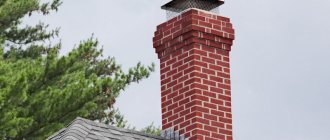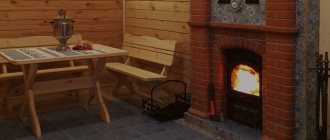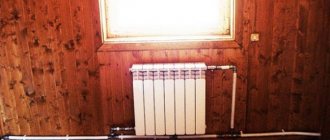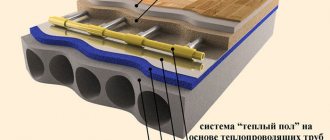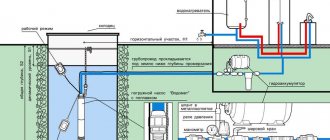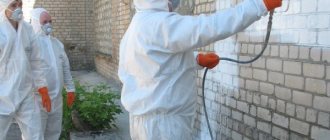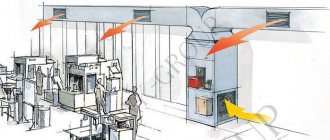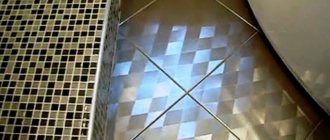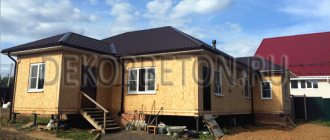Fireplace design
When we build brick fireplaces, the first step is to create a project that displays all the required dimensions of the structure and its parameters:
- Drawing creation. At this stage, a place for installing a fireplace is usually selected and its dimensions are calculated. When these parameters are known, fireplaces with a detailed description must be depicted on paper, observing the scale and affixing all dimensions. Of course, the drawing should also take into account the competent conduct of the chimney through all the ceilings, as well as the location of the blower and the design of the firebox.
- Preparation of tools and materials. Serious variability of materials is possible only when they are selected for cladding. So, finishing can be done using red ceramic bricks or decorative tiles. In this example, the first option will be considered.
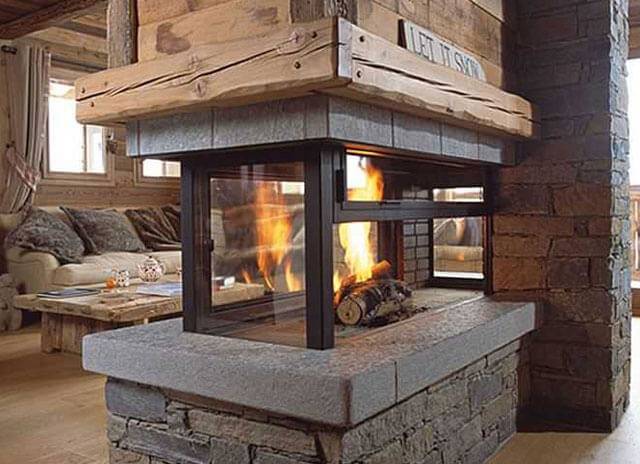
A set of materials for laying a fireplace with the specified parameters is as follows:
- Fireclay bricks of the brand not lower than M200 for the formation of the firebox;
- Red ceramic bricks in the amount of 250 pieces (it is advisable to take with a margin of about 10%);
- Materials for pouring foundations and brickwork (cement, sifted sand, gravel and water);
- Waterproofing material for laying the foundation;
- Smooth formwork boards;
- Grate;
- Metal door;
- Damper;
- Blown;
- Metal wire and rods required for reinforcing the structure;
- Wire 0.8 mm thick for dressings;
- Asbestos cord.
Before you make a fireplace in the house with your own hands, you need to prepare the following set of tools:
- Master OK;
- Roulette and marker;
- An even rule;
- Bulgarian;
- Level, plumb line and square;
- Construction stapler;
- Bayonet and shovel;
- Construction mixer or drill with an appropriate attachment;
- Rubber hammer for leveling brickwork;
- Conventional formwork hammer.
Fireplace design
A fireplace is a fairly simple heating device that provides room heating due to radiation from burning fuel (wood, coal, less often pellets or briquettes). Unlike a stove, heat transfer is of secondary importance here: although the walls of the fireplace heat up, they give off heat rather quickly.
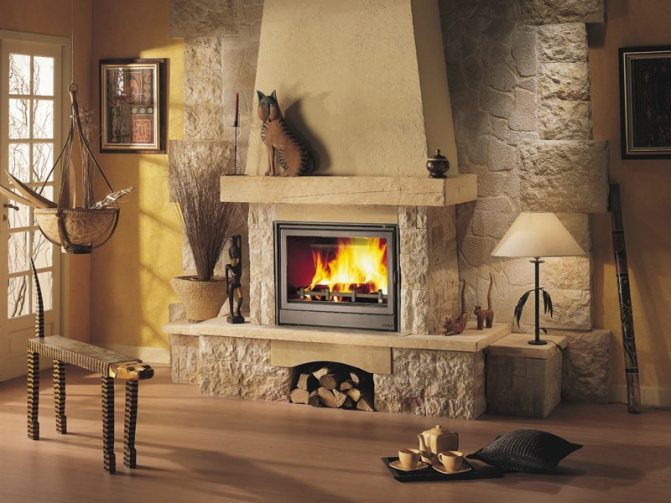

Wood burning fireplaces are very popular, although they are not energy efficient.
The design of this device is not complicated:
- The basis is the firebox - an open chamber in which combustion takes place. The efficiency of the fireplace depends on the configuration of the firebox and on its volume, so when calculating the dimensions of the structure, this parameter must be taken into account first of all.
- The chimney is responsible for the removal of combustion products. If you make a fireplace with your own hands "from scratch", then the chimney is placed directly above the firebox - this design ensures maximum efficiency of the entire system. If the fireplace is being built in a house with an existing chimney, then it can also be attached to the side - taking into account the design features, the loss of efficiency will be minimal.


Options for embedding a fireplace in the heating system of the house
Other parts that may be included in the design include:
- Ash pan with a latch.
- Grate.
- Cut off the flames.
- Fireproof glass screens or doors.
Outside, the structure is faced with heat-resistant materials or finished with plaster mixtures that are resistant to temperature influences.
It should be noted that a fireplace in a private house is usually used as an additional source of heating.This is due to not the highest efficiency of the open structure: the efficiency of classic fireplaces rarely exceeds 25 - 30%. On the other hand, let's be honest - we rarely make the decision to lay out a fireplace just because we are cold!
Gas fireplace
Gas fireplaces are based on a conventional gas burner. The effect of live fire is achieved with the help of artificial firewood, which is made of environmentally friendly non-combustible material that imitates real firewood. These fireplaces are convenient where there is gas. Most models can even be connected to bottled gas.
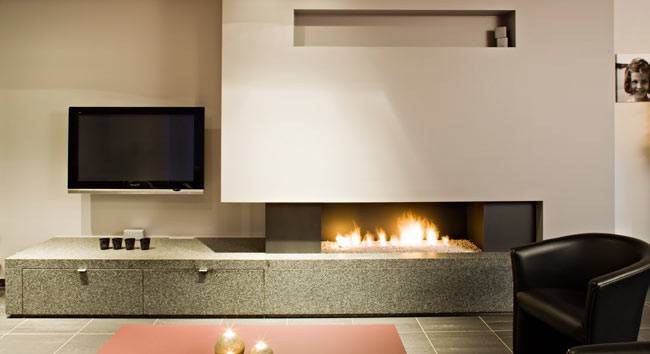

Such fireplaces do not require a special installation of the chimney: it is enough to bring the chimney into the gas duct or directly to the street. However, all work can only be carried out with the permission of the gas industry organizations. If everything is done correctly, then heating rooms with a gas fireplace is convenient and safe.


Isolation rules and guidelines
Protecting the floor in front of the fireplace is a mandatory manipulation that must be carried out without exception, both in a wooden house and in a brick house. Moreover, it is necessary to do the flooring according to the laws of the PB.
The most common cause of fires in homes that have stoves or solid fuel fireplaces is if the walls and flooring in front of the fireplace are ignited. A fire can occur as a result of contact of fuel and its glowing particles on an uninsulated wooden surface.
Floor insulation is essential not only for purchased steel or cast iron furnaces, but even for massive brick ovens that have their own refractory foundations. The perimeter of such structures should be framed with a metal plate or any other non-combustible refractory material.
Also, the space in front of the fireplace insert must be additionally protected. The minimum is to secure the space, at a distance of half a meter, and ideally up to 700 centimeters. Also, it is recommended to isolate the hearth on both sides, since with the slightest draft and open firebox, the products of combustion and decay can get there.
If you decide to buy a ready-made fireplace, which is based on steel or cast iron, you can cope with the cladding of the floor surface around it easier. To do this, simply lay and fix a sheet of steel on the floor, in the place where the firebox will be installed. After that, install your fireplace on such a protective covering. In this case, the size and shape of the sheet is chosen so that the space in front of the firebox is insulated by 500 centimeters, and on both sides of the unit, by at least 150-200 centimeters.
However, the steel sheet does not always have an aesthetic and attractive appearance, which in turn can negatively affect and affect the appearance of the overall decor of the room. Therefore, you can use other materials for these purposes, the appearance of which is much more attractive.
If you do not want to insulate the floor in front of the fireplace, as an option, you can make a suitable podium with your own hands:
- The podium should rise above the floor level and thus serve as reliable protection. Moreover, it will be wider on all sides, at least 300-400 centimeters than the fireplace itself;
- Before starting construction, you need to create a project, you can do this on a sheet of paper in a box or using a special program;
- The podium is an insert that separates the fireplace and the floor. At the heart of such a pedestal is a metal or brick frame, and the sheathing of such a structure is made using sheets of refractory drywall;
- Despite the fact that the pedestal is a separator between the firebox and the floor, this option is suitable and effective only for closed hearths, since the separation is able to protect combustible coatings from overheating.However, if the firebox of your fireplace is open, the assembly of the podium will not be enough to ensure complete and unconditional safety of the house and coatings.
The presence of a low podium also increases the speed, uniformity and quality of heating. Due to the fact that the fireplace becomes higher, the heated air masses do not accumulate near the floor below, but rise higher and thereby heat the room more evenly.
Alternatively, the floor can be tiled with a sheet of metal. Even an inexperienced beginner can install such a platform with his own hands:
- The most suitable metal that can adequately and one hundred percent protect the floor surface from overheating and ignition is copper. It is these sheets that are recommended to be purchased;
- Copper sheets have another significant advantage over other metals. It lies in the characteristic color of such a broom, it goes into gold and thus ideally combines and harmonizes with the flame burning in the hearth, does not get out of the general picture;
- Copper cladding sheets, in addition to their fire resistance, are able to reflect heat energy well. The sheet works like a reflector and distributes heat to all the twists of the room;
- Also, the undoubted advantages of such a material include its durability, preservation of its original attractiveness, as well as resistance to the formation of rust and corrosion;
- If desired and a special tool is available, various patterns, drawings, ornaments can be applied to the copper surface, the material lends itself well to changes, so you can experiment with its forms;
- Even in contact with an open flame, the metal does not burn, retains its original color, combined with fire, gives beautiful glare and color transitions.
Do-it-yourself fireplace rules
Before assembling a fireplace correctly so that it is as reliable and durable as possible, you need to take into account a number of rules aimed at achieving these goals:
- When arranging a brick fireplace, you need to create a separate foundation for it;
- The working part of the firebox can only be made of fireclay bricks, which should not come into contact with ordinary bricks;
- When installing the door and ash pan, you need to lay an asbestos cord and leave a small gap required for thermal expansion of metal elements;
- The inner part of the firebox does not require plastering;
- The rear wall of the firebox should preferably be placed at a slight angle.


A separate item is the fire safety rules, the observance of which reduces the risk of a fire to a minimum:
- Along the entire length of the flue duct, special cuts must be installed to increase the degree of fire safety;
- When placing the fireplace in close proximity to the wall, it is imperative to lay a layer of refractory material between them with a thickness of at least 20-25 mm;
- When installing the fireplace on a wooden floor, it is necessary to lay a metal sheet or ceramic coating under the structure so that they protrude beyond the fireplace perimeter by at least 30-35 mm;
- At the point where the pipe passes through the floor or ceiling, a 15-cm layer of heat-insulating heat-resistant material must be mounted;
- Only one own chimney can be used for the fireplace.
The operation of the fireplace is also carried out according to certain rules:
- It is strongly discouraged to heat the fireplace to the maximum temperature;
- For normal operation, the fireplace must be regularly cleaned from soot and ash;
- All flammable objects must be at least 70 cm away from the fireplace;
- Only the type of fuel for which the design was designed can be used in the fireplace.
Brick oven fireplace
A rather impressive weight is characteristic of stove bricks: the mass of one element sometimes reaches 3.5 kg.Taking into account the fact that the fireplace consists of thousands of bricks, this provides for the obligatory construction of a solid foundation, separated from the base of the walls, before installing the stove in the house on a wooden floor. This is done due to the difference in loads from wooden partitions and masonry. The advantages of a brick are its solidity and excellent heat capacity. After heating, it is able to give off comfortable heat to the inside of the room for a long time.
If the base for the stove is a fireplace on a wooden floor is made correctly, then problems with fire safety do not arise. To do this, the masonry from the wall must be made at least 25 cm thick, filling the space between the wood and the brick with stone wool. There is also an option with perlite or vermiculite falling asleep in this gap. Sometimes the gap is made out with asbestos cardboard or felt soaked in clay. In hardware stores, there are many options for modern thermal insulation materials.
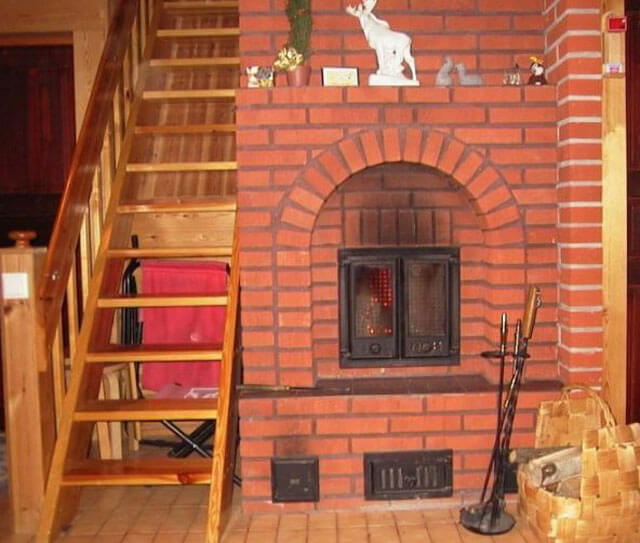

To achieve good efficiency of a brick oven in a wooden house, the following points must be taken into account:
- The dimensions of the firebox must be calculated as accurately as possible. This will allow most of the radiant energy to flow into the interior of the room.
- In order to prevent excess air from being removed outside the room, the cross-section of the chimney must be determined correctly. This parameter directly affects the intensity of traction.
- The uniformity of heat distribution and the level of heat transfer depends on the area of the fireplace surface and where the stove is installed in the house. Heating engineers advise using structures of complex shapes, which have protrusions, ribs and niches.
- A simple but effective method is used to stabilize the draft, prevent smoke and reduce the air taken out of the room during the installation of a cast iron stove in a wooden house. It consists in organizing an air channel inside the grate of the fireplace from the basement, underground or street. This channel is equipped with a special gate or damper to cut off the air supply during periods when the fireplace is not in use.
Bio fireplace eco fireplace
A biofireplace also gives the feeling of communication with a living fire. This is a real fire fireplace without a chimney. It doesn't need to be built into a wall, it doesn't need "serious" wiring, and it doesn't give off smoke when it burns. For the installation of biofireplaces in the apartment, no permits or approvals are required.
Due to the absence of heat and soot, biofireplaces can be of the most original forms and made of unusual materials. And their flame is so safe that some models are built into furniture. Bio fireplaces also humidify the air. In combination with aromatherapy, for which special kits are provided, this gives an excellent result. However, with a relatively low price of the biofireplace itself, its operation is very expensive.
We hope that our tips will help you when choosing your fireplace.
by the way
It is believed that the contemplation of fire clears the mind, streamlines thoughts, fills with spiritual warmth, the desire to warm another person, inspire him with optimism. A person becomes generous and kind, understanding and caring, generous and able to forgive and give warmth and love.


The main components of the fireplace
The portal is an external decorative part of the fireplace that frames the firebox. The area of the portal should be 1/50 of the area of the room, and the height should be no more than two times the depth of the furnace. The mantel is the upper horizontal edge of the portal. Traditionally, a mantel clock or other decorative objects are displayed on it, giving the fireplace a special charm. Smoke cornice - a ledge hanging over the open part of the firebox. Often it is performed in the form of a vault. Fireplace table - a refractory base of the fireplace, which serves to isolate the furnace part from flammable elements of the room. The fireplace insert is a niche lined with refractory bricks.The open part of it is most often square, rectangular or semicircular. The grate is used to maintain fuel and distribute the air entering from below. It is located at the base of the firebox, above the blower channel. The ashpit of the fireplace performs the same function as in a conventional stove. The rear mantel is constructed of fireproof materials and has a thermal insulation function. Khailo - fireplace smoke collector. Smoke tooth (smoke jib) - gas threshold. The smoke tooth protects the room from the ingress of smoke and soot into it; prevents the penetration of cold outside air from the chimney into the firebox. It improves the draft in the fireplace. The chimney (convector) of the fireplace is a kind of hood tapering towards the chimney. The rear wall of the convector is strictly vertical and goes straight into the chimney. A smoke damper, or gate, is a type of stove damper.
Which chimney is better
Chimneys differ not only in size and cross-sectional shape, but also in materials.
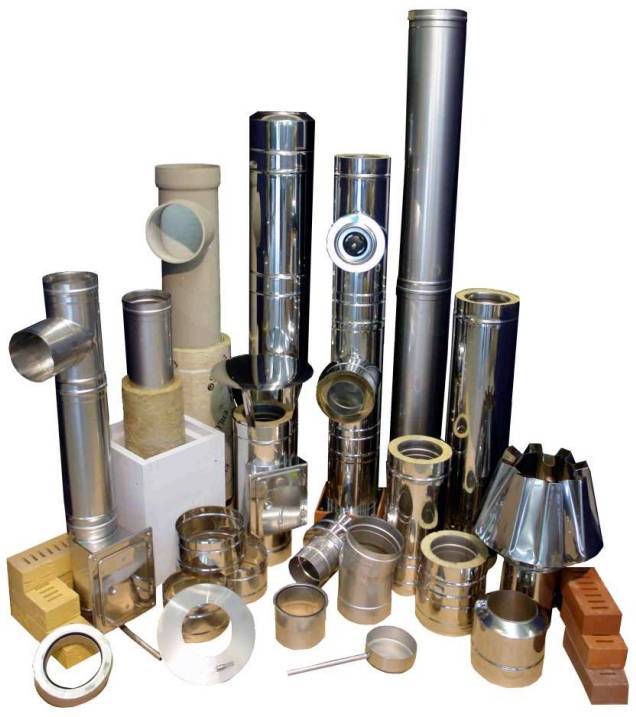

Chimneys for stoves and fireplaces
Brick chimney
Traditionally, red solid brick is used for the construction of a chimney. It is strictly forbidden to work with cheaper material - silicate bricks - such a chimney will burst at the first firebox. Red brick is strong, fireproof and durable, with high-quality masonry it serves on a par with the building - about 150 years. But the chimney, folded from it, has an inconvenient square shape. As the smoke rises in a spiral, cold air currents develop in the corners of the structure. This leads to condensation and accumulation of soot in the corners, destroying the material.
Brick chimney project in a multi-storey building |
Brick chimney project in a multi-storey building |
Brick chimney project in a multi-storey building |
Another significant drawback is the complexity of installation. It is extremely difficult to build a brick chimney with perfectly flat and smooth walls. The job is time consuming and most costly. The cost of laying a chimney is from 30 rubles. for a brick.
Older houses usually have a brick chimney. Before installing the fireplace, you need to invite the fire inspection, which will determine its condition, whether it needs repairs or not. If you are not satisfied with the location of the chimney, you can lay a new internal one nearby or install an external one, which is attached to the wall of the house. To ensure good draft of the fireplace, the height of the chimney must be at least 4 m.
Steel chimney
A more modern and convenient option is a steel chimney. Due to the circular cross-section, the smoke rises through it evenly, without lingering. Due to the two-layer insulation, condensation does not form on the inner surface of the chimney. Material, lightweight, high temperature resistant, corrosion resistant, durable and simple, mounts on brackets. One person can cope with its installation. In terms of the cost of materials, it is somewhat more expensive than brick, but it wins on installation. Often, in order to improve the operational characteristics of brick chimneys, a steel insert with a round section is placed inside. The role of insulation in this case is played by brick walls. The service life of the steel chimney is 15 years. The cost of a steel chimney is 17,000 (diameter -150 mm, length - 4 m). Installation - 15,000 rubles.
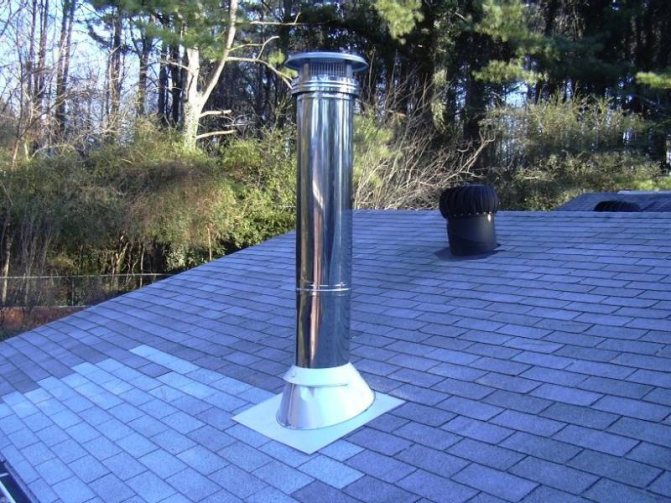

Steel chimney
Ceramic chimney
The best and most reliable type of chimney is ceramic. This is a multi-layer construction. A round ceramic pipe is placed in a separate expanded clay block, between which a layer of basalt insulation is laid. A chimney is assembled from elements held together with glue. The fireclay construction, in contrast to the brick and steel, ordered of any section, is produced in strictly established sizes - from 12 to 20 cm. Manufacturers give a guarantee for the material for at least 30 years. The cost of a ceramic chimney is 24 600 rubles. (diameter -140 mm, length - 5 m).Installation - 15,000 rubles.
Ceramic chimney Effe2 Domus |
Ceramic chimney Effe2 Domus |
Ceramic chimney Effe2 Domus |
FAQ
It is better to entrust this task to a specialist. However, preparation can be done independently. To install a fireplace, you need base (floor) - what to put the fireplace on, leaning wall - what to lean against the fireplace (with the exception of special, "universal" preparation of the place, planning a large and solid base, a large wall and a chimney "with a margin", but it is better to prepare for a specific model of the fireplace, taking into account its geometry, weight, style of cladding and characteristics of the firebox.
If a indoor floor durable and made of stone (tiles, etc.) on a concrete floor - most likely no additional preparation is required. If parquet or board is planned instead of stone, it is recommended that the fireplace area be made of floor tiles, otherwise the parquet in front of the fireplace will eventually suffer from coal and dry out, forming cracks. A fireplace installed on a wooden floor (wooden beams serve as a power base) poses a danger not so much by the amount of additional load as the danger of cracks and leaks due to the mutual relative mobility of the floor and the leaning wall. The wooden floor under the fireplace should be replaced with a more rigid one, which provides a minimum displacement relative to the wall of the fireplace leaning.
Leaning wall (if it is intended for the selected fireplace model) must be made of durable non-combustible material: brick, concrete, etc. Specific recommendations for the design and its shape can be made only after choosing a fireplace model. For example, for classical portals, the device of a niche in the leaning wall can be considered a good preparation. Universal preparation - a brick plastered wall wider than the size of the fireplace to the full height from floor to ceiling.
Fireplace chimney largely determines the performance of the fireplace. Primary requirements to him:
- Chimney height should be sufficient to create the necessary vacuum inside a closed firebox with glass and create a draft for a fireplace with an open firebox. The chimney height must be at least 5 meters from the fuel combustion surface. With a chimney height of more than 12 meters, special measures have to be taken to limit the discharge created in a closed firebox. Make sure that the smoke ducts are not lower than the ventilation ducts.
- Chimney duct must be thermally insulated, made of non-combustible, dense materials that ensure its tightness, its main part must pass inside the heated room. In practice, the chimney is most often made in the form of a brick shaft, inside which there is a thin-walled stainless steel pipe, or special ceramic chimney sections (blocks) of various sizes are used, or the chimney is made in the form of double-walled metal elements with thermal insulation based on basalt fiber. A vertical chimney is required for a fireplace, but an inclined section is allowed, the angle of inclination of which depends on the characteristics of the connected firebox, and in any case cannot be more than 45 ° from the vertical. The optimal shape of the canal is round and the walls are smooth.
Place for a fireplace:
- The walls and ceiling adjacent to the fireplace must be non-combustible, plastered or leveled with a plaster layer.
- Plasterboard slabs should not be placed behind the fireplace.
- In wooden buildings, a fragment of a flammable ceiling or wall should be removed and replaced with a brick or aerated concrete wall.
- Another possibility is to make an additional brick wall in front of the wooden wall, separated by a ventilated air void.
- When parquet, panels or planks are laid on the floor, terracotta, granite, marble or other non-combustible material resistant to high temperatures should be laid on the entire surface of the base of the fireplace, as well as in invisible places.
- The floor under the fireplace must be level.
- It is best if the fireplace does not protrude from the wall, does not create a ledge on the wall (this saves valuable space in the room and gives more design freedom; a fireplace on a flat wall is more elegant and attractive, and often also cheaper).
- The chimney should be located in the middle of the planned fireplace, and if the fireplace is corner, it should be located in the corner itself, in many cases it is recommended to carry out a careful design of the fireplace and, on this basis, determine the localization of the chimney.
How to install a fireplace in a wooden house the correct installation process and video
Many people wonder how to install a fireplace stove in a wooden house. To do this, it is worth considering and correctly performing each of the stages of performing these works.
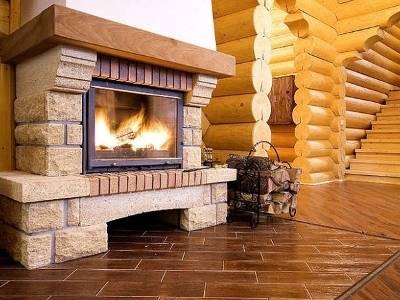

Fireplace in a wooden house
The stages can be conventionally divided into:
- preparatory (planning the location of the fireplace);
- installation of a heat-resistant base for the fireplace;
- installation of a fireplace insert;
- cladding works;
- installation of the chimney system with the implementation of all safety measures.
If you do not know how to properly install a fireplace in a wooden house, follow the step-by-step implementation of all the above works on installing the fireplace and then you will be able to achieve the desired result.
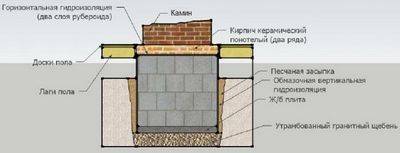

And for those who want to know in more detail how to install a fireplace in a wooden house, a video review of this procedure is posted below.
Note! Performing all these types of work requires compliance with all safety requirements, as well as possession of special knowledge and professional skills. It is best to invite a specialist, but if you still decide to carry out the installation yourself, before installing a fireplace in a wooden house, read the basic recommendations
It is best to invite a specialist, but if you nevertheless decide to carry out the installation yourself, before installing a fireplace in a wooden house, read the basic recommendations.
The layout of the fireplace in the room
Be sure to consider the fact that the fireplace should not be placed in line with door or window openings. It is also forbidden to install a fireplace in rooms that are less than 20 m2 in size.
Heat-resistant base and installation of the insert
In order to prepare the room for the installation of the fireplace, it is necessary to remove the floor covering in the place chosen by you for installation and to make a concrete screed there.


Concrete base scheme
Note! If you took up the construction of a wall fireplace, then the wall itself must be secured by lining it using non-combustible material. Brick may be the best option for this.
If it is not possible to get rid of the floor covering, then the non-combustible base is installed on top of the floor.
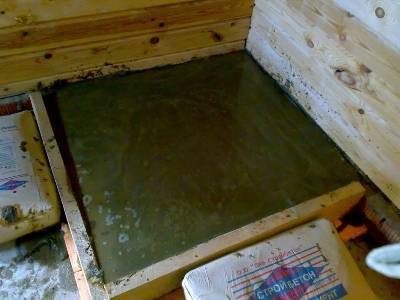

The base surface must be perfectly flat so that the firebox can be installed in a horizontal position. You can use heat-resistant glue or mastic to secure it.
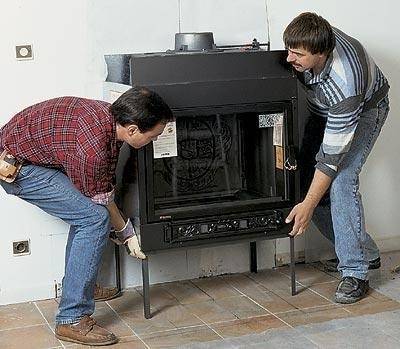

All walls adjacent to the fireplace must be replaced with aerated concrete or brick.
Before installing the firebox, a fireclay brick or a sheet of steel should be laid under it, and it is recommended to place basalt wool between the ceiling and the floor.
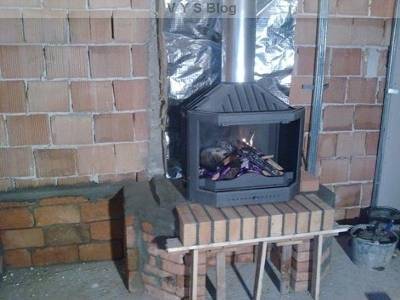

Laying bricks under the firebox
In the installation work for installing the firebox you will need:
- drills for metal;
- drill;
- sealant gun;
- grinder with a disc for metal.
For correct execution, you will need the appropriate skills.
Cladding and installation of the chimney system
Installation of cladding has its own requirements
It is very important that it does not come into contact with the fireplace insert.If you use flammable materials for decoration, you must definitely create a kind of protective belt from reinforced concrete.


Materials for cladding:
The most common option is to perform plastering. To do this, a plaster mortar must be applied to the surface in a double layer. As a result, the resulting layer should be about five centimeters thick. After it dries, the surface can be painted.
Chimney installation
Heat-resistant mastic is used to fix ceramic tiles. You should monitor the location of the cladding and align it with a bar of wood by tapping it on the tiles. The result obtained is kept for a day before the tiles can be washed and cleaned.
The chimney system is made of non-combustible materials. On the inside, you can cover with foil wool. The wooden ceiling must be secured by installing a protective cover over the fireplace. The distance between the casing and the chimney must be at least 30 cm.
How to tie the fireplace foundation to the floor?
It is not so difficult to connect the chimney base to the floor plane. Initially, it should be determined with the material from which the foundation will be made. Then choose a location for its location. Next, using mathematical calculations, its overall dimensions are identified and laying begins.
If the foundation for the fireplace is traditional and will be made of concrete, then temporary formwork is made and poured with a building mixture. Allow to harden within 24 hours. During this time, the base will gain strength and harden.
We dance from the stove
The arrangement and maintenance of such a hearth is laborious and not cheap, but if you cannot imagine your life without warming yourself in a rocking chair by your fireplace on cold winter (cool summer) evenings with a pipe (book, knitting) or a cup of hot chocolate ( another drink of your choice), covered with your favorite blanket, then this material will be useful to you. First, we decide on the main thing. Fundamentally different conditions when choosing a fireplace and a place for its installation for owners of apartments or a finished cottage and those who are just under construction (in this case, the choice and laying of a fireplace is possible without restrictions in the type of construction).
Ready or future layout, as well as wall and floor materials - all this suggests different possible options for installing a fireplace
It is important what material the house is built from - wood (rounded logs, profiled beams) or stone (brick, reinforced concrete, aerated concrete blocks). Remember that the fireplace will need a chimney.
All fireplaces are subdivided by location into:
- frontal, located near the walls,
- angular, which are in the very corner of a triangular shape,
- island, or so-called. "Central" (free-standing), which do not touch the walls.
Before designing a fireplace, it is important to understand why you are installing the fireplace: just home decoration or aesthetics plus space heating. Fireplaces for the home, by the way, can perform different functions: heating, decorative, aesthetic and even culinary
Fireplaces are wood, electric and gas and biofireplaces.
You must have clear answers to the questions: type and power of the fireplace; additional elements of the fireplace; the need for a foundation or reinforcement of the floor; increasing the fire resistance of walls in the fireplace area; facing material.
Those who know a lot about fireplaces are advised not to lay them on their own, like chimneys. Such work requires in-depth knowledge of the combustion and smoke removal processes, and the mistake made can be too expensive.
Installing a wood-burning fireplace in an apartment
Installing a fireplace in an apartment is more difficult (and sometimes completely impossible) than in an individual house.The reason is that many apartment buildings were built without taking into account the installation of chimneys.
The only exceptions are three options:
- the last floor of a high-rise building;
- any of the floors of a two-story house (in this case, as in the previous one, it is possible to make an internal chimney yourself);
- high-rise building, which provides for a collective chimney, allowing the installation of a fireplace in each of the apartments.
In all three cases, before starting work, it is necessary to obtain permission to install a fireplace. First, contact the fire department. A specialist of the organization will go to the site to check the condition of the chimney, how it meets the fire safety requirements. The cost of the examination is from 1000 rubles.
Then contact the construction expertise, which will issue a conclusion whether the floors will withstand the weight of the fireplace. The expertise will also develop a project for installing a fireplace (cost - from 6,000 rubles). The prepared project, technical passport and title document must be submitted to the housing and communal services department of the district administration, the non-departmental commission of which will issue permission to install a fireplace.
In an apartment of a multi-storey building, you can install a fireplace weighing up to 700 kg and only with a closed firebox. In this case, the area of the room should be at least 20 square meters in order to ensure proper air exchange.
The installation of a fireplace should be entrusted to a fireplace specialist. They will be able to take into account a lot of specific points
In particular, during installation, it is important to ensure the flow of air by providing a technological gap in the design of the fireplace. It is necessary to observe the distance between the firebox and the wall so that it does not overheat during operation and does not burst
In case of incorrect installation, the warranty on the firebox does not apply. It must be remembered that any chimney, regardless of material, needs regular maintenance. A specialist must be invited 2 times a year: at the beginning and at the end of the heating season. The soot accumulated on the walls of the chimney impairs draft and eventually destroys the material, since it is an aggressive substance.
What should be the dimensions
Table with dimensions of fireplace elements
| Fireplace elements | Space area, m2 | |||||
| 12 | 15 | 20 | 25 | 30 | 40 | |
| Portal width | 50 | 60 | 70 | 80 | 90 | 100 |
| Portal height | 42 | 49 | 56 | 63 | 70 | 77 |
| Firebox depth | 30 | 32 | 35 | 38 | 40 | 42 |
| The height of the rear wall of the firebox | 36 | 36 | 36 | 36 | 36 | 36 |
| The width of the rear wall of the firebox | 30 | 40 | 45 | 50 | 60 | 70 |
| Smoke box height | 57 | 60 | 63 | 66 | 70 | 80 |
| Chimney section with rough walls | 14x27 | 14x27 | 27x27 | 27x27 | 27x40 | 27x40 |
| Chimney section with smooth walls | 14x24 | 14x27 | 14x27 | 27x27 | 27x27 | 27x27 |
The size of the hearth always depends on the parameters of the room. There are uniform standards, so for rooms with a volume from forty to eighty cubic meters / m, it is necessary that the firebox be from 1 to 50 at least 1 to 70 parts of the volume. The fireplace insert must be correctly sized and dimensioned according to standard requirements.


According to these calculations, the area of the furnace openings should be from 0.2 to 0.4 square meters. m. The height of the firebox should be 3/3 of the part to the width. From these data, the firebox should be 36X45 and 52X77 cm. A drawing of the fireplace with dimensions is shown below.
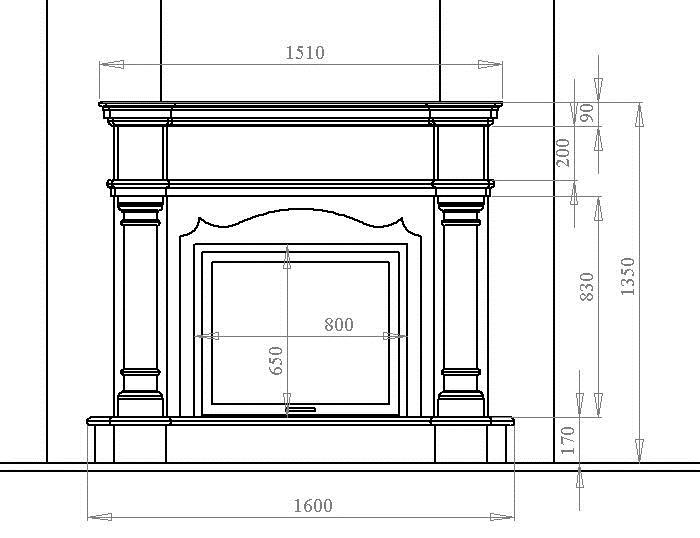

When the dimensions of the firebox are specified, the rest of the parameters of the fireplace are calculated. The attached video in this article shows how you can make the calculation yourself. That is, this is some kind of instruction for work.
- The depth of the furnace openings. Depends on the height of the fireplace, it is half or a third. Even if the height of the firebox is slightly increased, the heat transfer will already be reduced, therefore it is always important to calculate the size of the fireplace stove in advance. If, on the contrary, reduce the height, then all the smoke will be directed into the room.
- The size of the chimney for the fireplace depends on the parameters of the furnace. Its cross-section must necessarily be less than 9-15 times the area of topoholes. Take, for example, 10 times, then for a hearth with a hole for a firebox 0.2 sq. m, the section will be 0.02 sq. m, and with an area of 0.4 - 0.04 sq. m.That is, the dimensions of the chimney for the fireplace will be 14x14 cm or 14 by 27 cm, and the diameter of the pipe will be from 9 to 14 cm.
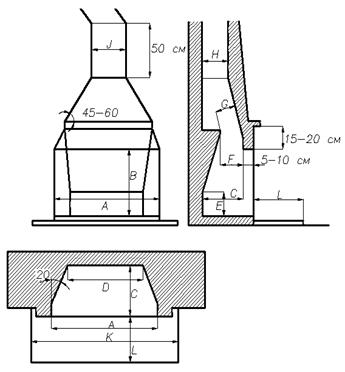

Observing these proportions, you can easily calculate other parameters of the furnace.
We must remember! It is important to observe the proportions when installing the fireplace, otherwise it will be unsafe and in the near future it will still have to be altered or removed altogether.
Where to install the fireplace
Mainly on the ground floor
It would seem that fireplaces should not have weight restrictions. However, it is worth considering where and which model you want to install. The weight of the complete structure (with a chimney, if not built into the wall) sometimes requires reinforcement of floors or foundation. The mass of a small brick fireplace is on average 4.5–5 tons.
As a rule, ceilings are not designed for such a load, therefore large models are installed on their own foundations and only on the first floor. On subsequent floors, light ready-made fireplaces or models built into the walls are used.
You can use fireplaces not only on the first floor of a country house, but then it should be a light gas fireplace for a summer residence.
Pipe to the street
In European homes, the chimney is often located in the outer wall or even outside. The climatic conditions of our country, unfortunately, do not allow repeating this, therefore, you will have to install a chimney in a warm part of the building, otherwise expensive work on thermal insulation will be required.
Perfect room with fireplace
Spacious and tall.
There are restrictions on the area of the fireplace room. It must be at least 20 sq. m with a ceiling height of 3 m. If you install a fireplace in a small room, then the volume of air will not be enough for full combustion. In this case, it is necessary to provide a duct for air intake from the street or from a ventilated basement.
Commensurate with the furnace window.
It is not necessary to place a small fireplace in a large room, because he simply cannot heat the whole room. The area of the firebox for masonry fireplaces should be 1/50 of the area of the room (ratio 1:50), for fireboxes and for factory fireplaces - 1 kW of power per 10 sq. m room.
In a room with direct access to the street, the fireplace will be exclusively an element of decor - you are unlikely to be able to heat the room with it.
Has the correct shape.
It is not recommended to install fireplaces in elongated rooms and corridors, because heating and air flow will be uneven. The fireplace room must have the correct movement of air masses, due to frequent drafts, the draft will be disturbed. When choosing a gas fireplace for a summer residence, take care of good ventilation of the room.
Place for a fireplace
It is important to take into account not only your own desires, but also the recommendations of SNiPs, as well as fire safety rules. For example, the walls near the fireplace should be made of non-combustible materials.
In a wooden house, it is better to install an island model or carry out fire-fighting work.
It is undesirable to place the fireplace in front of the window, as some of the heat will be lost. The firebox should face the center of the room. In any case, it is necessary to contact a specialist who will professionally assess such points as the movement of air in the premises and the quality of the ceilings.
There are many "pitfalls" that only masters know about
For example, in a wooden house, it is important to know how the floor beams are laid; the possibility of installing a chimney depends on this. He needs a meter by meter hole
If they are laid with a smaller pitch than required, an expensive renovation will have to be done. published by econet.ru
If you have any questions on this topic, ask the specialists and readers of our project here.
Copper plate platform
Quite often, for fire safety purposes, the floor is finished with a simple sheet of metal. Copper is usually used as a suitable material. Copper has certain advantages over other metals.It has a characteristic shade similar to the color of the flame, which harmoniously fits the platform into the cozy atmosphere of the room.
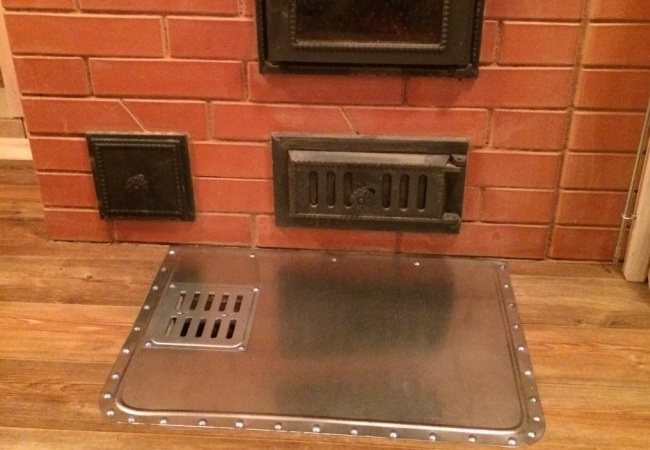

Metal backing
The sheet serves as a screen from which radiation is reflected. This increases the share of energy entering the room and decreases the share that is transferred to the floor. Copper has excellent corrosion resistance and is environmentally friendly.
In addition, due to the fact that the metal lends itself to processing, various patterns can be engraved on it, even at home. Being in the immediate vicinity of the hearth, the copper sheet does not lose its physical properties, and the ability to reflect radiation ensures the platform glow in the dark.
Installing a fireplace in a private house
It is much easier to install a fireplace in a private house, in terms of permits. As such, there are no regulatory documents. The only thing to consider is recommendations for the arrangement and condition of the chimney and the weight of the structure.
The location of the fireplace must be determined at the design stage of the house. Depending on the size of the room in which it will stand, and the purpose (it will be used for heating or carry a decorative role), the size and power of the firebox are selected. The parameters of the chimney depend on these values. As a rule, ready-made closed furnaces are purchased for fireplaces today, on which manufacturers will certainly indicate the recommended size of the chimney section. If the chimney does not match it, the fireplace will smoke during operation.
Podium construction
The idea of insulating the floor from the heat effects of the firebox can be realized by installing a podium. This is a kind of insert between the flooring and the hearth of the fireplace, which is made of brick or a metal profile sheathed with plasterboard.
Initially, the podium in modern fireplaces was built to imitate an English style portal. But later attention was drawn to the fact that removing the firebox from the floor reduces the risk of fire in the floor covering. And if a closed-type firebox is used, then we can talk about ensuring the safety of the fireplace. However, open fireboxes still pose a risk of sparks falling outside the specified limits.


Massive structure in the living room
The protection provided by the podium is to a certain extent arbitrary, as there are no standards for the height of the structure or the temperature gradient from top to bottom.
Preparation of tools and materials
To make a fireplace yourself, you need the following set of tools:
- Master OK;
- Mason's hammer or rubber mallet;
- Notched and normal trowel;
- Mixing buckets;
- Perforator;
- Screwdriver;
- Construction mixer or drill with an appropriate attachment;
- Building level;
- Water level;
- Plumb line;
- Roulette;
- Pencil or marker;
- Bulgarian;
- Tile cutting device.
The list of required materials is as follows:
- Red oven brick, brand M-200;
- Facing brick;
- Steel corners with a section of 50x50 mm;
- Steel strips with dimensions of 50x5 mm;
- Self-tapping screws with wide washers;
- Plastic dowels for self-tapping screws;
- Heat-resistant masonry mixture;
- Heat-resistant mastic;
- Cement grade M500 and sand;
- Heat-insulating foil-clad material in the form of plates;
- Minirite slab (required for arranging a fireplace in a wooden building);
- Ceramic tiles or porcelain stoneware;
- UD and CD profiles for drywall;
- Drywall sheets;
- Set of decorative grilles for ventilation windows;
- Heat resistant sealant.
